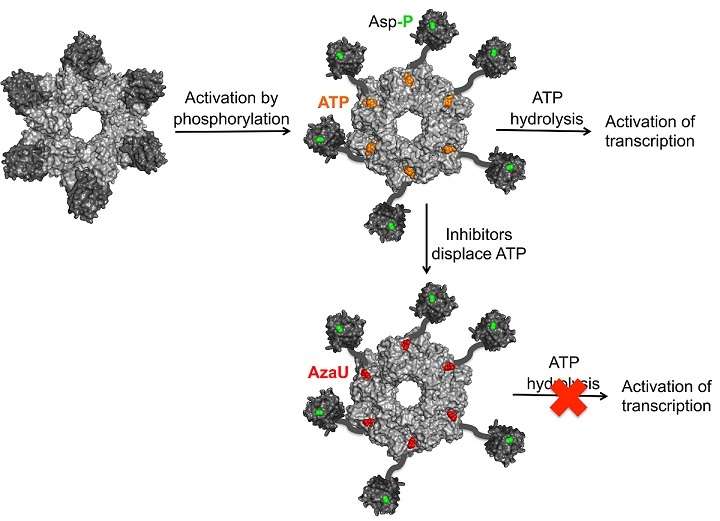Silencing cholera's social media

Bacteria use a form of "social media" communication called quorum sensing to monitor how many of their fellow species are in the neighborhood, allowing them to detect changes in density and respond with changes in collective behavior. Because of the importance of quorum sensing to the behavior of disease-causing bacteria like Vibrio cholerae, the cause of the deadly disease cholera, understanding how it works has the potential to allow us to disrupt it for therapeutic purposes.
Quorum sensing involves bacteria secreting small signaling molecules called autoinducers that are detected by receptors located in other bacteria; these receptors then trigger intracellular responses via downstream signaling proteins called response regulators. In a new study, researchers led by Frederick Hughson and Bonnie Bassler at Princeton University, publishing in the open access journal PLOS Biology this week, now tease apart the molecular mechanism whereby one of these response regulators, LuxO, regulates the pathogenicity of V. cholerae.
LuxO, like many other members of the AAA+ ATPase superfamily of proteins, was expected to form a doughnut-shaped structure made of six molecules. The active form (but not the inactive form) of LuxO was already known to bind to specific target genes, activating their transcription, but it was not known how the phosphorylation of LuxO by quorum-sensing receptors regulated this activity. With a combination of X-ray crystal structures, and functional testing of judiciously engineered LuxO molecules, the authors of this study now show how this happens.
Each individual LuxO molecule is made of three domains; an N-terminal receiver (R) domain, a central catalytic (C) ATPase, and a C-terminal DNA-binding (D) domain. In their study, the researchers determined the crystal structure of a version of LuxO from the related bacterium V. angustum that lacks the D domain, finding that the C domain forms the expected doughnut shape with C domains of five other LuxO molecules, and that the R domains sit on the outside of this ring.
However, the authors noticed an unusual linker segment between the R and C domains; in the inactive state, when the R domain is unphosphorylated, this linker and part of the R domain physically block the active catalytic site in the C domain. Mutating the linker or the interface between the R and C domains prevented this inhibition from happening, resulting in a LuxO molecule that was permanently switched "on." Comparison with other closely related AAA+ ATPase proteins suggests that the internal molecular movements that usually accompany R domain phosphorylation would also relieve this inhibition, with the R domains swinging out to liberate the LuxO ATPase catalytic site—a pre-requisite for activating transcription of target genes (see image).
The intriguing inhibitory mechanism revealed by this study is an entirely novel mechanism of AAA+ protein regulation, and opens the door for pharmacological interference. The prominent position of LuxO in the quorum-sensing cascade and the fact that it is found in many vibrio species makes it a particularly attractive target for drugs that might treat cholera and diseases caused by related bacteria. As proof of principle, the authors also analysed the mechanism of action of a small-molecule inhibitor of V. cholerae virulence called AzaU that they had previously identified. They show that AzaU also binds to the active site of LuxO, mimicking aspects of the autoinhibitory mechanism and turning off the production of virulence factors.
More information: Boyaci H, Shah T, Hurley A, Kokona B, Li Z, Ventocilla C, et al. (2016) Structure, Regulation, and Inhibition of the Quorum-Sensing Signal Integrator LuxO. PLoS Biol 14(5): e1002464. DOI: 10.1371/journal.pbio.1002464
Journal information: PLoS Biology
Provided by Public Library of Science



















